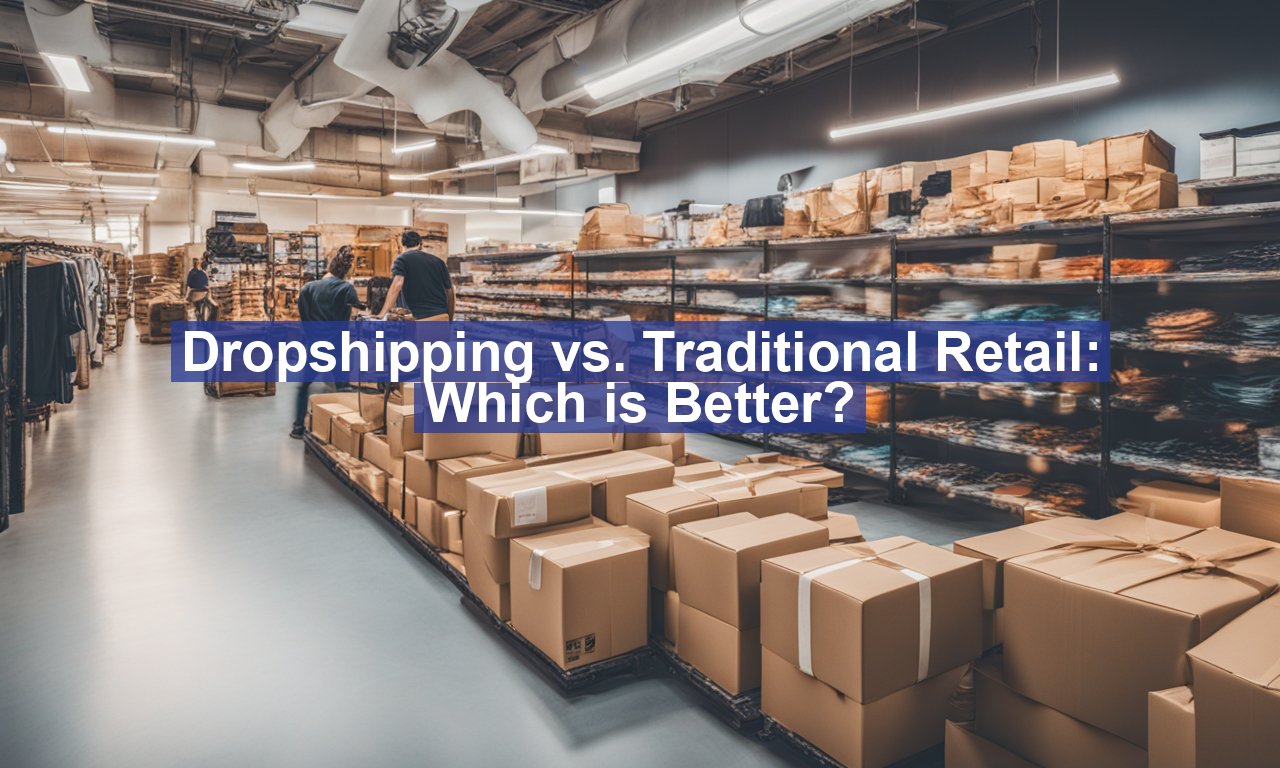Dropshipping vs. traditional retail: which is better? In an era where convenience and cost-efficiency are paramount, many aspiring entrepreneurs find themselves at a crossroads between dropshipping vs. traditional retail: which is better? Both models offer unique advantages, yet they cater to different business strategies and consumer demands. Understanding these differences is key to determining which approach might better suit your venture aspirations.
Whether you’re drawn to the allure of digital, inventory-less success or the tangibility of a brick-and-mortar setup, we’re here to help you weigh the pros and cons of each model, so you can make a well-informed decision.
Understanding Dropshipping
For the uninitiated, dropshipping is a type of retail where the seller accepts customer orders without keeping stock on hand. Instead, orders are fulfilled directly by the manufacturer or wholesaler, streamlining inventory management.
Advantages of Dropshipping
- Low Startup Costs: One of the most appealing aspects of dropshipping is the low initial investment. You don’t need capital for inventory or storage space, which allows you to launch with minimal financial risk.
- Scalability: As your business grows, dropshipping allows you to manage increasing orders without the logistic nightmares that traditional retailers face.
- Flexibility: You can easily change your product offerings without being tied to existing stock, adapting quickly to market trends and consumer demands.
Challenges of Dropshipping
Despite its benefits, dropshipping comes with its own set of hurdles:
- Low Profit Margins: With fewer overheads, naturally, come lower profits. The competitive nature of dropshipping often results in price wars, squeezing profits.
- Less Control Over Quality and Delivery: Since products are shipped directly from suppliers, you may have less oversight and control over product quality and shipping times, which can impact customer satisfaction.
- Inventory and Supplier Issues: Relying on third-party suppliers means product availability can sometimes be unpredictable.
The Traditional Retail Route
On the other end of the spectrum lies traditional retail—a business model that’s existed for centuries. It involves maintaining a physical or online storefront, where you hold inventory and sell directly to customers.
Advantages of Traditional Retail
- Better Control Over Brand and Quality: Running a traditional retail business allows you more control over your brand’s presentation and product quality.
- Higher Profit Margins: By purchasing stock in bulk directly from manufacturers, traditional retailers can enjoy better profit margins.
- Personal Customer Experience: Whether it’s through a physical store or personalized online communications, traditional retail offers more avenues for fostering deep customer relationships.
Challenges of Traditional Retail
Despite its familiarity, traditional retail comes with its own set of challenges:
- Higher Overhead Costs: Inventory storage, employee salaries, and rental costs contribute to the higher expenses associated with traditional retail.
- Complex Logistics: Managing inventory, shipping logistics, and returns require significant time and resources.
- Less Flexibility: Changing your product line can be more complicated and costly compared to the dropshipping model.
Which Model is Right for You?
Choosing between dropshipping and traditional retail depends largely on your resources, goals, and risk tolerance. Here are a few key points to consider:
- Budget: If you’re on a tight budget, dropshipping might be the more attractive option due to its low upfront costs.
- Product Control: If controlling product quality and customer experience is crucial, traditional retail may provide the oversight you need.
- Growth Plans: If you aim to rapidly scale, dropshipping allows for quicker expansion without the burden of logistical hurdles.
Dropshipping vs. traditional retail: which is better? For the skeptics questioning the future of traditional retail, it’s crucial to note that physical stores are not dead. Many customers still prefer the tactile experience of in-store shopping, and certain product categories perform better offline. On the flip side, dropshipping represents a significant shift in how businesses operate—a leaner business model for the digital entrepreneur.
Whichever path you choose, it’s vital to stay informed, adaptable, and ready to embrace change. If you’re interested in diving deeper, Forbes offers insights into how e-commerce continues to evolve, while Shopify’s blog presents useful case studies on successful dropshipping strategies.
Conclusion
Both business models have entrenched themselves in the retail ecosystem, each catering to varying market segments. Your business vision, resources, and appetite for risk will ultimately guide you to the best fit. So, arm yourself with knowledge, and let your entrepreneurial journey begin!


